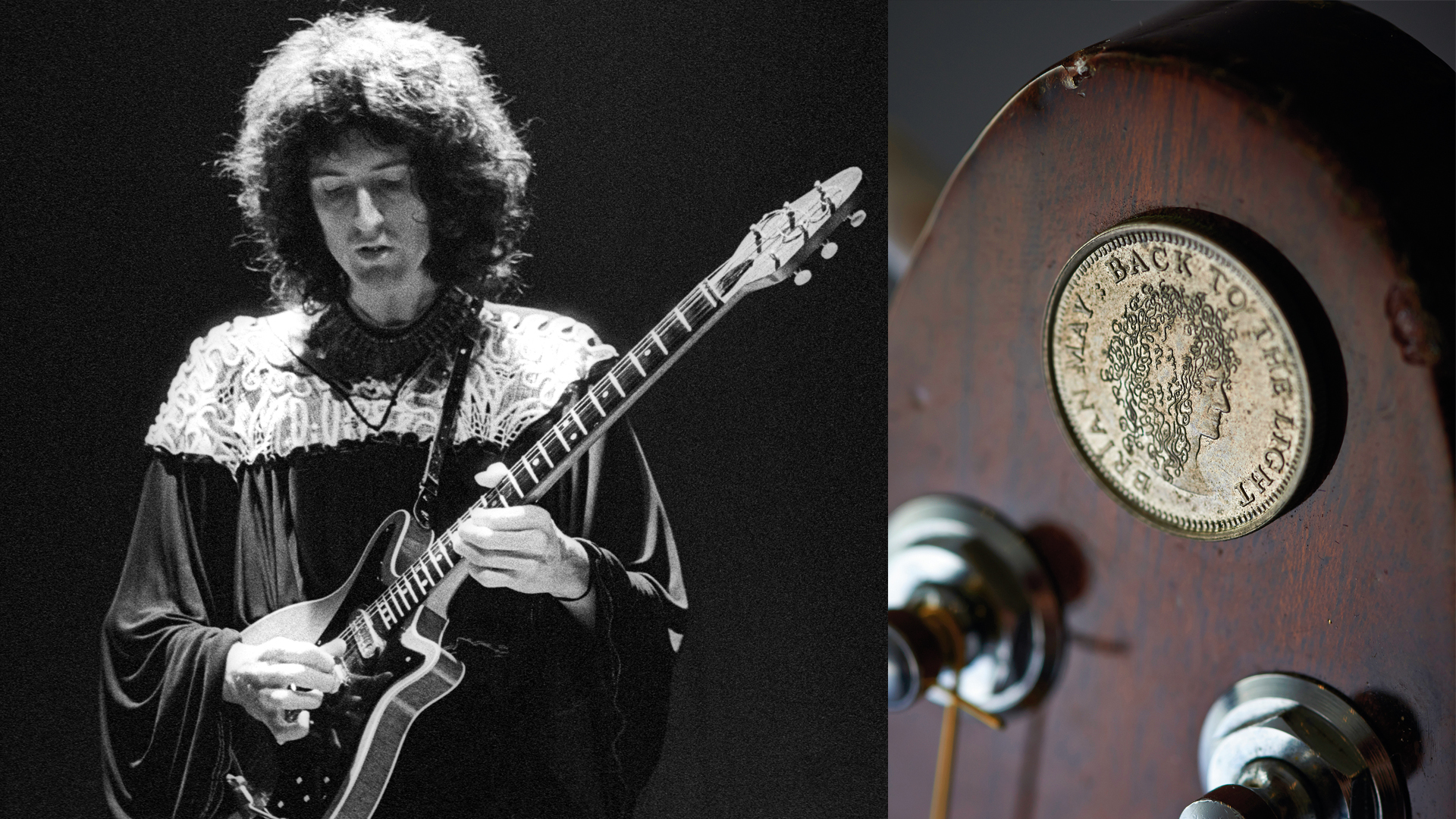Make Scale-Based Licks Sound Unique with Octave Displacement
Give your lines a more personal spin with this technique.

Scales are the building blocks of nearly all melodic improvised lines, yet simply climbing up and down a favorite scale is a foolproof recipe for creating lines that are as enticing as leftover scrambled eggs. So how can we make scale-based lines and licks sound personal and unique?
One simple, yet powerful way to give scales a fresh spin is with octave displacement. Here’s the concept: Simply play the notes of any given scale in ascending or descending order, but shift a few of the notes up or down an octave from their normal placement.
Figure 1’s leapfrogging line illustrates the process. As the phrase moves through C Lydian (C D E F# G A B), several scale tones get displaced, and this transforms the plain-Jane scale run into a wily lick John Scofield would be proud to play.
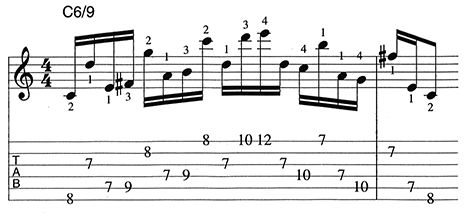
Figure 2, a similarly contoured phrase, uses A harmonic minor (A B C D E F G#) to create an altered-dominant sonority against E7b9. Again, we avoid the by-the-book scale-run doldrums by octave-displacing a few tones.
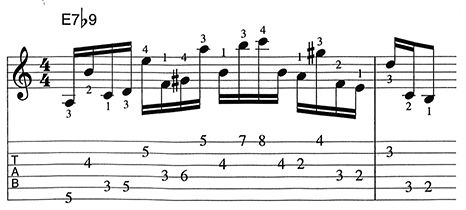
Simple? Yes. Hip? Definitely.
A slightly different take on the altered-dominant flavor, Figure 3 illustrates how a D half-whole scale (D Eb F F# G# A B C) - so named because of its alternating half-step/whole-step construction - can be used melodically to convey the harmonic sequence of D7b9.
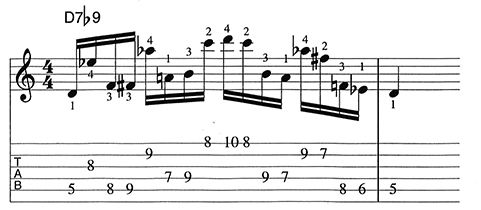
Figure 4 and 5 demonstrate other intriguing dominant applications: an F whole-tone scale (F G A B C# Eb) over F7#5, and a chromatic scale over E7#9, respectively.
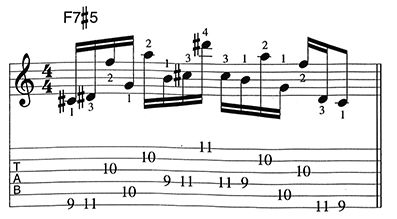
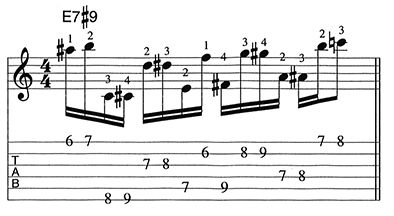
Figure 6 is a line built from F melodic minor (F G Ab Bb C D E), a tasty choice for minor/major 7 chords - as shown here - and for minor 6 chords as well.
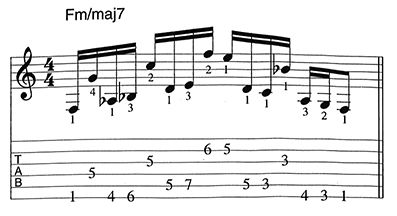
With the large melodic leaps (including ninths and tenths) and tricky string-skipping inherent in octave-displaced phrases, you may find yourself stumbling here and there. Don’t panic - the concept is easy, but it takes time to master the quirky maneuvers.
Tips For Further Exploration
• Use alternate (down/up) picking and give even weight to each note. You can add accents later, but first strive for uniformity in each line.
• Record the suggested chords for each example and then play the examples over your prerecorded harmony. This way you’ll experience each one in harmonic context. You may find that these lines can also work with other chord types. Trust your ears - if a line sound good in a different setting, use it.
• Create your own octave-displaced lines. Try a variety of scales and modes and explore different fretboard positions.
Get The Pick Newsletter
All the latest guitar news, interviews, lessons, reviews, deals and more, direct to your inbox!
“Write for five minutes a day. I mean, who can’t manage that?” Mike Stern's top five guitar tips include one simple fix to help you develop your personal guitar style
"It’s like you’re making a statement. And you never know where it’ll lead." Pete Thorn shares the tip that convinced Joe Satriani he was the right guitarist for the SatchVai Band










